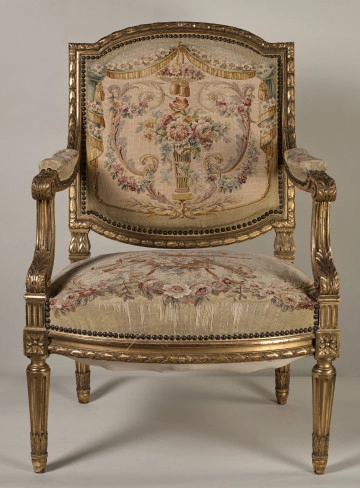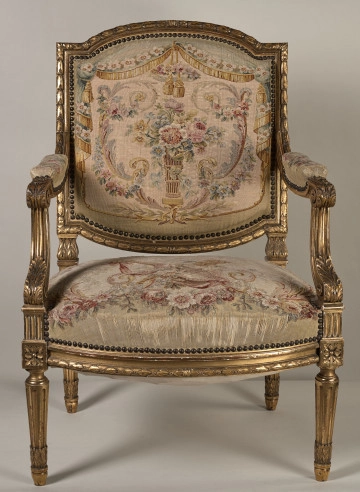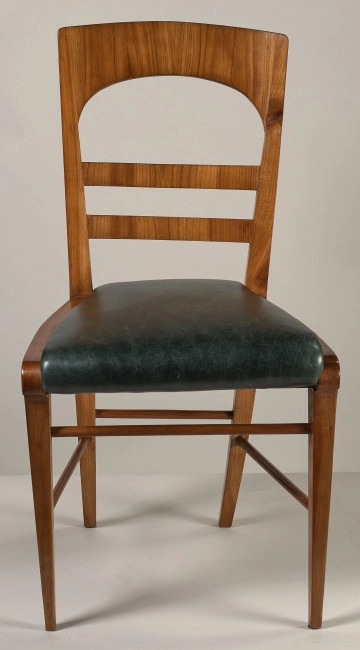
Armchair
19th (?) century
Castle Museum in Łańcut
Part of the collection: Meble i wyposażenie wnętrz
Rococo screen with Chinese scenes A screen usually consists of several articulated wings. The piece serves as a movable wall used to enclose or divide a space. It is one of the most functional and handy appliances used in residential interiors. Its name comes from the Italian para vento, translated as “shield from the wind”. The French borrowed the term and popularised it under the name paravent. Screens originated in China. They probably appeared in Europe in the 16th century, when explorers’ and merchants’ expedition rekindled the European fascination with the Far East. As interest in the broader culture of the Orient grew, so did the demand for Far Eastern handicrafts or their European imitations. In Europe, screens were most popular in the 18th and 19th centuries. In interior design, the Far Eastern style underwent transformations, adapting to the needs of current fashion. This is particularly evident in the art of the French Regency and Rococo, on which the rest of Europe modelled itself. The presented screen, partly filled with silk fabric, is an example of the combination of the European and the Orient. Its wooden and gilded frame, decorated with wood-carved motifs of cockerels’ combs, shells and flowers, typical of the Rococo style, was fitted in the upper part with eight Chinese genre scenes painted in watercolour on paper. This piece was part of the furnishings of the Łańcut Castle interiors before the Second World War. Teresa Bagińska-Żurawska https://orcid.org/0000-0002-9243-3967
Author / creator
Dimensions
height: 147 cm, width: 156 cm
Object type
Furniture and interior fittings
Technique
sewing
Material
silk (fabric), of plant origin
Creation time / dating
Creation / finding place
Owner
Castle Museum in Łańcut
Identification number
Location / status

unknown
19th (?) century
Castle Museum in Łańcut

unknown
19th (?) century
Castle Museum in Łańcut

unknown
19th (?) century
Castle Museum in Łańcut
DISCOVER this TOPIC
Museum of King Jan III's Palace at Wilanów
DISCOVER this PATH
Educational path
0/500

We use cookies to make it easier for you to use our website and for statistical purposes. You can manage cookies by changing the settings of your web browser. More information in the Privacy Policy.
We use cookies to make it easier for you to use our website and for statistical purposes. You can manage cookies by changing the settings of your web browser. More information in the Privacy Policy.
Manage cookies:
This type of cookies is necessary for the website to function. You can change your browser settings to block them, but then the website will not work properly.
WYMAGANE
They are used to measure user engagement and generate statistics about the website to better understand how it is used. If you block this type of cookies, we will not be able to collect information about the use of the website and we will not be able to monitor its performance.